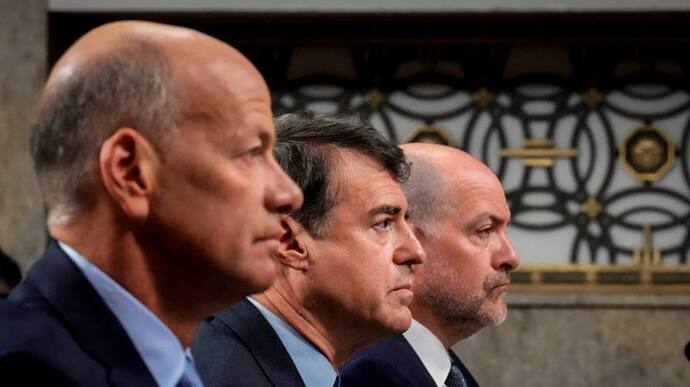Introduction
The Federal Reserve System, often referred to as “the Fed,” is the central bank of the United States. It was established by an act of Congress in 1913, with the primary purpose of stabilizing the country’s banking and financial system. The Fed has a range of responsibilities, including conducting monetary policy, supervising banks, and ensuring the smooth functioning of payment systems. This article provides an overview of the Federal Reserve’s functions, organization, and history.
Functions
The Federal Reserve performs a variety of functions, some of which are mandated by law and others that have developed over time. The Fed’s primary responsibilities include:
- Monetary Policy
One of the most important functions of the Federal Reserve is the formulation and implementation of monetary policy. Its goal is to influence the supply of money and credit in the economy to achieve stable prices, maximum employment, and moderate long-term interest rates. The Fed uses a range of tools to accomplish these goals, including open market operations, discount rate changes, and reserve requirements.
- Financial Supervision
Another crucial function of the Federal Reserve is ensuring the safety and soundness of the banking system. The Fed supervises and regulates large banks and financial institutions, conducts regular examinations, and monitors their compliance with relevant laws and regulations.
- Payment System Oversight
The Federal Reserve is responsible for overseeing the country’s payment and settlement systems. This includes the clearing and settlement of checks, wire transfers, and automated clearinghouse (ACH) transactions. The Fed also provides payment services to depository institutions, such as wire transfers and automated clearinghouse services.
- Economic Research
The Federal Reserve conducts research on a variety of topics related to the economy, including monetary policy, banking, and financial stability. Its research is used to inform its policy decisions and to provide insights to policymakers, academics, and the public.
- Financial Markets
The Federal Reserve also plays a role in maintaining the stability of financial markets. It monitors and analyzes market conditions and intervenes when necessary to prevent or mitigate disruptions.
Organization
The Federal Reserve System is a decentralized organization, with several components that work together to fulfill its responsibilities. At the top of the organization is the Board of Governors, which is composed of seven members appointed by the President and confirmed by the Senate. The Chair of the Board of Governors is also the head of the Federal Reserve System.
The Federal Reserve System also includes twelve regional Federal Reserve Banks, located in major cities throughout the country. Each Bank has a President and a board of directors, which are responsible for implementing or carrying out policies set by the Board of Governors. The Federal Reserve Banks provide a variety of services to depository institutions, such as holding reserves, making loans, and providing payment services.
The Federal Open Market Committee (FOMC) is the policymaking group within the Federal Reserve System. It is composed of the seven members of the Board of Governors and five of the twelve regional Federal Reserve Bank presidents. The FOMC meets regularly to assess economic conditions and make decisions about monetary policy.
History
The Federal Reserve was established in response to a series of banking panics that occurred in the late 19th and early 20th centuries. The panic of 1907, in particular, highlighted the need for a more centralized banking system that could provide liquidity during times of crisis.
In 1913, Congress passed the Federal Reserve Act, which created the Federal Reserve System. The System was designed to provide a more stable and flexible banking system, with a central authority that could respond to changing economic conditions.
Over the years, the Federal Reserve has played a crucial role in supporting the U.S. economy, particularly during times of financial stress. For example, during the Great Depression of the 1930s, the Fed implemented a variety of policies to help stabilize the banking system and promote economic recovery.
In recent years, the Federal Reserve has been at the forefront of efforts to promote financial stability and prevent future economic crises. It has implemented a range of new regulations and policies aimed at reducing the risk of another financial crisis, including higher capital requirements for banks and enhanced supervision of large financial institutions.
Conclusion
The Federal Reserve System is a critical institution that plays a vital role in the U.S. economy. Its responsibilities include conducting monetary policy, supervising banks, overseeing payment systems, conducting economic research, and maintaining financial stability. The Fed’s decentralized organization, with its Board of Governors, twelve regional Federal Reserve Banks, and Federal Open Market Committee, provides the flexibility needed to respond to changing economic conditions and promote the well-being of the nation.
Disclaimer
6do Encyclopedia represents the inaugural AI-driven knowledge repository, and we cordially invite all community users to collaborate and contribute to the enhancement of its accuracy and completeness.
Should you identify any inaccuracies or discrepancies, we respectfully request that you promptly bring these to our attention. Furthermore, you are encouraged to engage in dialogue with the 6do AI chatbot for clarifications.
Please be advised that when utilizing the resources provided by 6do Encyclopedia, users must exercise due care and diligence with respect to the information contained therein. We expressly disclaim any and all legal liabilities arising from the use of such content.















